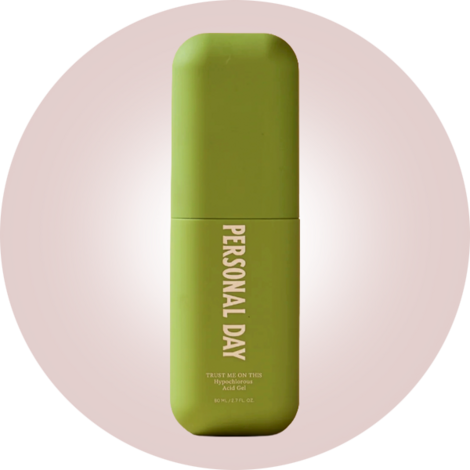Any addict knows that the process of chasing the hit soon becomes as much a part of the dependency as the drug. Take, for example, the coffee fusspots who obsess about their paraphernalia like needle-fixated junkies. This gives me some comfort about the latest drug experience I’m high on while writing this article: the use of “snus” involves the least glamorous ingestion method short of a suppository. By the time I am — hand trembling, heart racing — fishing a slimy white slug, trailing drool, from my mouth, I can see how hard it will be for this to become cool.
That’s not, however, for want of trying. Totally legal oral nicotine pouches, only launched in the past few years, are taking off at a rate among young people and especially boys. They are colloquially known as snus in this country, although it’s important to explain the mass confusion over this term, which proliferates every time it is in the news. Technically, snus describes dark sachets of oral tobacco that look like mini teabags. This cannot be legally sold in the UK, although it is legal to use it. The sale of oral tobacco has been illegal in the EU since 1992, with the exception of Sweden, which managed to argue that black spit was every Swede’s birthright.
However, when my teenagers talk about snus, it isn’t the same product at all. This article is about “tobacco-free nicotine pouches” that are designed to stick unobtrusively in your cheek. They contain a white powder and look dodgier than tobacco pouches, resembling something that might be found in a body cavity during a prisoner strip search (my research involved stumbling across people who do put nicotine pouches in such places for an even greater high but there are limits to my gonzo journalism).
Snus, though, is understandably users’ preferred term, over the unappetising “pouch”. The pouch in my cheek feels like a dressing involved in my wisdom tooth extraction. However, the brands are trying to appeal to a core market of gamers, music-lovers and athletes. For example, one of them, Nordic Spirit, had stands offering free samples at music festivals from the Isle of Wight to Latitude. The very best advertising has come free: tobacco and nicotine pouches are such a hit with Premier League footballers — Jamie Vardy is among those to have gone public — that in some squads managers estimate a third of players are using them, littering the changing room floor.
Buying a nicotine pouch is as easy as buying candy. A five-year-old could legally buy nicotine pouches with their sweeties, although manufacturers state it is an over-18 product. Because they are not cigarettes or e-cigarettes, they fall into a legal void. A government consultation on vaping, titled Creating a Smokefree Generation, has just drawn to a close, with nicotine pouches hurriedly added as an afterthought. Until the government catches up, such pouches will continue to be freely sold in pretty pots with flavors like Watermelon Mint and Bellini. The young guy who sells me my 20 pouches for about $8 couldn’t be more enthusiastic: he pulls his own stash from his pocket and says they saved him from smoking 40 a day.

And this is the ethical dilemma, says Harry Tattan-Birch, a research fellow in behavioral science at University College London, and one of the few researchers into nicotine pouches in the UK. Is this a futuristic and sinister new way for Big Tobacco to get kids addicted to nicotine? Nordic Spirit is a diversification of the tobacco giant JTI, which owns cigarette brands including Camel and Silk Cut. Footballers are a case in point: these are non-smokers hooked on a new addiction. Alternatively, is it a valuable way to reduce harm? The consensus is that nicotine pouches are among the safest ways to be a nicotine addict, certainly better than cigarettes but also safer than vaping. If we truly want a smoke-free generation, are nicotine pouches our safest bet?
First, the concerning news. The advertising push is strong. Tattan-Birch’s research on nicotine pouch advertising is titled Sports, Gigs and TikToks. If you’re not aware of snus, it’s because you’re not young. In 2021 the Advertising Standards Authority (ASA) rapped Nordic Spirit for an ad on a gaming streaming service, showing gamers popping the pouches under their lip and the line “never miss a moment”, which apparently was about the ease of “hands-free” nicotine. The ASA worried it implied that the stimulant improved gaming prowess.
Buying a nicotine pouch is as easy as buying candy.
“They’ve bought collaborations with all sorts of bars, venues and festivals,” Tattan-Birch says. In October, Velo nicotine pouch advertising took over all the tunnels of Oxford Circus Tube station with the tagline “Instant enjoyment anywhere”.
“They’ve started standing in train stations, offering free samples,” Tattan-Birch says. They do ask if people are 18 and existing smokers before handing them out, but still, he says, “it’s brave”. Why brave?
“I feel like it’s a good way to get the regulators to look at you,” he says. “I’ve also heard there are clusters of schools where it’s incredibly popular. It’s one of the most concealable ways to use nicotine.”
There are anecdotes of footballers playing with a sachet between their toes to avoid the manager’s disapproval. And, of course, boys are inspired by their footballing heroes. Gareth Southgate, the England manager, said: “I am very aware that a lot of footballers use those pouches.” The Professional Footballers’ Association recently commissioned a study with Loughborough University to assess the extent of footballers’ addiction to illicit tobacco pouches and to legal nicotine pouches (the lead researcher told me that footballers use both and they are “commonly confused”).
Why footballers? Some use it before or during games, perhaps inspired by evidence that nicotine can improve athletic performance, including a study in the 2018 Journal of Applied Physiology. However, Tattan-Birch advises caution as almost all such studies are on non-nicotine users experiencing a “first rush”. Nicotine addicts will need to keep increasing their dose just to stay at baseline. Second, the life of a footballer is so prescribed by their club contracts and drug testing that nicotine pouches represent one possible vice.
“They have to make sure that their bodies are in full working condition,” Tattan-Birch says. “They hardly ever drink. None of them smoke, as it would ruin their cardiovascular fitness. Very few vape. None of them use cannabis because they’ll get drug-tested. Nicotine pouches have become the recreational drug of choice for footballers, used in a social setting.”
Let’s cut now to the experience of Gary Lineker, recounted on his podcast in November. Lineker was at a Manchester hotel the night before a BBC1 broadcast. Micah Richards, his podcast co-host and fellow former football player, persuaded him to try a nicotine pouch. Richards said on the podcast that, like many footballers, he liked using nicotine pouches. “A bit of nicotine,” Richards said. “You put it in your gum, and it gives you a relaxing feeling.”
It didn’t go so well for Lineker. He found himself stark naked in his hotel room, dizzy, sweating so profusely it puddled on the floor. Lineker pulled the nicotine pouch out too late. The only way to get to the bathroom to vomit was “like a snake, just sliding, that’s the only way … it’s horrendous … thank you very much for that, Micah”.
Nicotine is extremely addictive, and carries physical and mental health risks. One study on rats, for example, found that adolescent exposure to nicotine led to attention span problems in adulthood. Yet the risks are infinitesimal if compared with smoking. The website of Cancer Research UK states: “Nicotine does not cause cancer.” As a product, nicotine pouches are too new to compare with vapes, yet Tattan-Birch says the working medical consensus is that nicotine pouches will prove less harmful.
Advertising took over [a Tube station] with the tagline “Instant enjoyment anywhere.”
“The Netherlands has banned nicotine pouches, which doesn’t make much sense to me,” Tattan-Birch says. “I can understand restricting advertising so you don’t target new users. But leaving the most harmful nicotine product on the market, cigarettes, that kills seven million people each year, and then banning probably the least harmful nicotine product, nicotine pouches, that seems like a not very wise public health decision.”

Tattan-Birch’s research shows that about 1 in 300 adults are now using pouches. Having doubled in a year between 2020 and 2021, the figure is now rising slowly but steadily. This rate is far higher in a specific group: men were four times more likely to use, and especially young men. This follows the pattern in the use of oral tobacco pouches in Sweden, he says. There, tobacco pouches were marketed as an alternative to smoking for athletes. As a result a large proportion of young men switched to tobacco pouches while it remains rare for women (note: is this because we women also care about looking gross as we fish it out of our back teeth like drug mules?).
Partly thanks to snus, Sweden is set to be the first European country to go smoke-free, which is defined as having a smoking rate of less than 5 percent of the population. Data published by the World Health Organization in 2018 showed that Swedish males have the lowest rate of lung cancer in the EU. Swedish women were not so lucky.
Tattan-Birch’s research shows that about 1 in 300 adults are now using pouches.
“If Sweden had banned tobacco pouches out of fears that it’s attracting all these young men to tobacco, they may have just bolstered the market share of cigarettes and led to many more deaths,” Tattan-Birch says.
As soon as I put the phone down I put a nicotine pouch in my cheek. It burns. My heart begins to race, and my typing speed furiously accelerates in time. I hate it. It feels like falling in love.
The hit is far more intense than vaping
By Georgina Roberts
Since my teens, I have guzzled every form of nicotine I can get my hands on. Roll-up cigarettes, Juul and Elf Bar vapes have all had me in a chokehold. But I have never tried snus (or what goes by that nickname in this country), the under-the-gum nicotine pouch that top English footballers are rumored to be hooked on. That is, until today.
I’ve heard that it packs a punch of nicotine but, as a vaping addict, I’m confident it won’t touch the sides. So I pick up a “strong” pack from my local corner shop for around $9, the same price as my usual vape. It’s clearly popular — this off-license sells five brands in different strengths and flavors.
The medicinal-looking white pot it comes in makes a change from Elf Bars’ bright multicolored packaging. It reminds me of my grandad’s pill box, and the Swedish writing all over it is a little disconcerting. The 20 white pouches inside are each the size of a fingernail. Here goes.
The pouches are “frosty grapefruit” flavor and smell fruity, so I’m looking forward to a sweet taste when I shove one under my top lip in the office. Instead, I’m taken aback by a sharp burning sensation as soon as the bag touches my gum. It really is quite painful and unpleasant. The packet has far less of a health warning than cigarettes, and proudly says “99% less toxicants than a cigarette,” but this feels as if it must be rotting my gums.
On the upside, the rush it gives me is pretty immediate. I’m wired and buzzing; it’s as if I’ve just downed two black coffees. My skin is tingling and my heart is beating faster. This hit is far more intense than a few puffs of a vape or cigarette. But I miss the satisfaction and taste of blowing out a giant cloud of fruity vapor.
Snus certainly gives you a kick, but it doesn’t help with concentration. If anything, the sensations are distracting me from my emails. I’m also very aware of it being in my mouth — when my colleague asks me a question, I feel as if I’m replying with a blueberry under my lip.
The burning in my gums subsides and is replaced by light-headedness. After five minutes, it’s all starting to feel a bit too intense, so I remove the pouch, which now looks like a grotty piece of chewed gum.
The handful of my friends who have tried the stuff aren’t fans. Grace, 29, was given a pouch in an eight-hour meeting by a colleague because no one could take cigarette breaks. “It hit me like a ton of bricks,” she says. “I was like, wow, I do feel really, really wired. I was chatting so much and really hyped up to work. My colleague had to take me aside, like, ‘You need to calm down, maybe take it out.’ I didn’t like it because it makes your gum really itch and burn. They’re not going to take off like vapes have.”
George, 29, was given one by his colleague at after-work drinks. “It was all a bit weird. I’m a social smoker, so this gave me a fat nicotine rush. I felt jittery. And it was awkward having it under my lip. It’s not a very nice feeling,” he says.
Part of the appeal of vapes is that they are sleek, compact and easy to pick up and put down when you’re out socializing. But I’d feel gross popping this soggy sachet in and out of my mouth like a half-eaten sweet when I’m at the pub. I’d also struggle to drink a glass of wine with it in.
Fifteen minutes after taking the pouch out, I glance at the vape on my desk and, for once, don’t feel a stabbing urge to puff it. But although snus have clearly stamped out my nicotine cravings, it’s far less satisfying than vaping and I couldn’t hack that burn every day. It also feels more like you’re surreptitiously taking a drug than a nicotine product. So I’ll be sticking to my vape until I finally manage to kick that habit.
Helen Rumbelow is a political correspondent for The Times of London. Georgina Roberts is an editorial assistant at The Times Magazine




